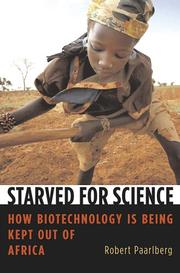| Listing 1 - 4 of 4 |
Sort by
|

ISBN: 1555813399 9781555813390 9781613442470 1613442475 9781555815899 1555815898 1555819249 9781555819248 1283034174 9786613034175 9781683671770 1683671775 Year: 2006 Publisher: Washington, D.C.
Abstract | Keywords | Export | Availability | Bookmark
 Loading...
Loading...Choose an application
- Reference Manager
- EndNote
- RefWorks (Direct export to RefWorks)
The fourth edition of Biological Safety: Principles and Practices continues the format of the previous edition, focusing closely on infectious and toxic biological agents and their identification and control.
Hygiene. Public health. Protection --- Environmental protection. Environmental technology --- Toxicology --- Hazardous substances --- Accidents, Occupational --- Laboratories --- Safety. --- Microbiological laboratories --- Biological laboratories --- Microbiologie --- Biologie --- prevention & control. --- standards. --- Safety measures. --- Laboratoires --- Sécurité --- Mesures --- Basic Sciences. Biotechnology --- Biosafety, Risk Evaluation Bioveiligheid, --- Biosafety, Risk Evaluation Bioveiligheid,. --- Sécurité --- Safety measures

ISBN: 0674041747 9780674041745 9780674033474 9780674029736 0674029739 067426634X Year: 2009 Publisher: Cambridge, MA
Abstract | Keywords | Export | Availability | Bookmark
 Loading...
Loading...Choose an application
- Reference Manager
- EndNote
- RefWorks (Direct export to RefWorks)
In Starved for Science Paarlberg explains why poor African farmers are denied access to productive technologies, particularly genetically engineered seeds with improved resistance to insects and drought. He traces this obstacle to the current opposition to farm science in prosperous countries.
Agricultural biotechnology --- Crops --- Agriculture and state --- Agricultural crops --- Crop plants --- Farm crops --- Industrial crops --- Farm produce --- Plants, Cultivated --- Agronomy --- Crop science --- Plant products --- Agro-biotechnology --- Biotechnology --- Genetic engineering --- Basic Sciences. Biotechnology --- Biosafety, Risk Evaluation Bioveiligheid,.
Book
ISBN: 0511994060 110722019X 0511991851 0511987277 0511989075 0511990863 9786612976582 0511992858 1282976583 0511976585 9780511990861 9780511992858 9780511976582 9781282976580 9781107001473 1107001471 9781107440029 1107440025 9781107440029 6612976586 9780511991851 Year: 2011 Publisher: Cambridge New York Cambridge University Press
Abstract | Keywords | Export | Availability | Bookmark
 Loading...
Loading...Choose an application
- Reference Manager
- EndNote
- RefWorks (Direct export to RefWorks)
"This book addresses the issues and methods involved in governing risks posed by genetically modified (GM) agriculture. It examines the evolution of policies intended to ensure the safety of GM crops and food products in the United States and Europe and the regulatory approaches and other social controls employed to protect human health, the environment, conventional farming and foods, and the interests and rights of consumers. Discussion encompasses the cultural, political and economic forces that shape the design and application of the methods of risk governance, as well as other contextual features such as the influence of multinational companies seeking acceptance of their GM ventures. This discussion also examines the influence of the dynamic public discourse fostered by progressive concepts of risk governance and the approaches taken to meet its demands for transparency, public participation and appropriate consideration of public perceptions and values despite conflicting views of experts"-- "This book addresses the issues and methods involved in governing risks posed by genetically modified (GM) agriculture. It examines the evolution of policies intended to ensure the safety of GM crops and food products in the United States and Europe and the regulatory approaches and other social controls employed to protect human health, the environment, conventional farming and foods, and the interests and rights of consumers. Discussion encompasses the cultural, political, and economic forces that shape the design and application of the methods of risk governance, as well as other contextual features such as the influence of multinational companies seeking acceptance of their GM ventures. This discussion also examines the influence of the dynamic public discourse fostered by progressive concepts of risk governance and the approaches taken to meet its demands for transparency, public participation, and appropriate consideration of public perceptions and values despite conflicting views of experts"--
Genetically modified foods --- Risk. --- Economics --- Uncertainty --- Probabilities --- Profit --- Risk-return relationships --- GM foods --- Genetically engineered foods --- Food --- Food law and legislation --- Law and legislation. --- Safety measures. --- Biotechnology --- Basic Sciences. Biotechnology --- Biosafety, Risk Evaluation Bioveiligheid,. --- Law --- General and Others

ISBN: 9780444885302 0444885307 9780080875002 0080875009 9786611783051 1281783056 Year: 1991 Publisher: Amsterdam : Elsevier,
Abstract | Keywords | Export | Availability | Bookmark
 Loading...
Loading...Choose an application
- Reference Manager
- EndNote
- RefWorks (Direct export to RefWorks)
Mounting concern for the state of the environment has led to a substantial increase in the collection of environmental data in the past two decades. This trend raises issues with regard to the quality assurance and quality control of the data gathering process, from sampling to analysis. The evaluation of environmental data in terms of quality, and relevance for use in the management of toxic chemicals in the enviroment, has reached a critical phase. An enormous volume of data is being generated, on both residue levels and their effects, to meet short- and long-term needs for regulatory pro
Environmental impact analysis. --- Pollution --- Risk assessment. --- Basic Sciences. Biotechnology --- Environmental Sciences and Forestry. Environmental Management --- Measurement --- Statistical methods --- Quality control. --- Statistics --- Evaluation. --- Biosafety, Risk Evaluation. --- Environmental Pollution. --- Analysis, Risk --- Assessment, Risk --- Risk analysis --- Risk evaluation --- Evaluation --- Chemical pollution --- Chemicals --- Contamination of environment --- Environmental pollution --- Contamination (Technology) --- Asbestos abatement --- Bioremediation --- Environmental engineering --- Environmental quality --- Factory and trade waste --- Hazardous waste site remediation --- Hazardous wastes --- In situ remediation --- Lead abatement --- Pollutants --- Refuse and refuse disposal --- Analysis of environmental impact --- Environmental assessment --- Environmental impact assessment --- Environmental impact evaluation --- Impact analysis, Environmental --- Environmental auditing --- Environmental monitoring --- Environmental protection --- Environmental aspects
| Listing 1 - 4 of 4 |
Sort by
|

 Search
Search Feedback
Feedback About UniCat
About UniCat  Help
Help News
News